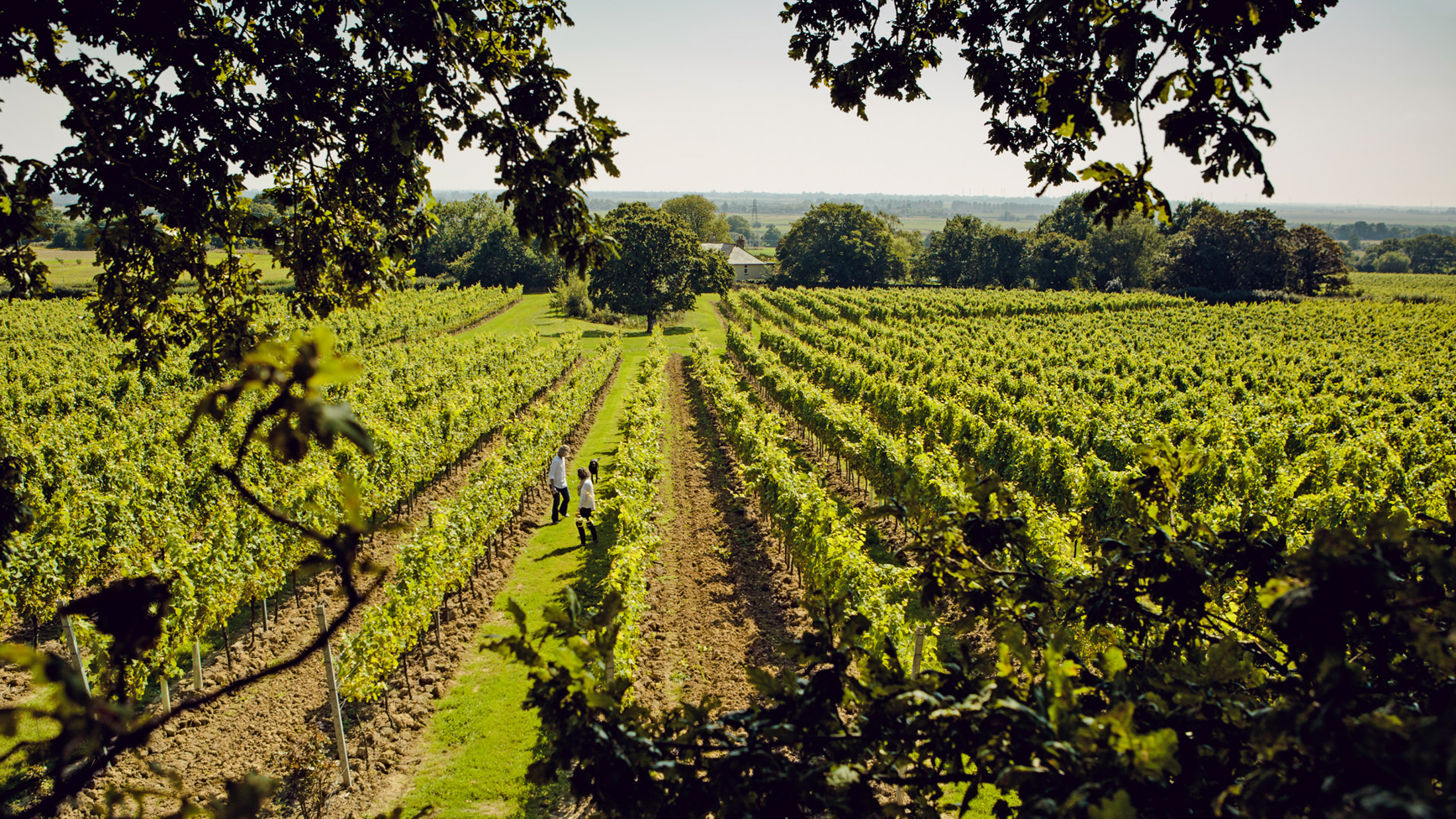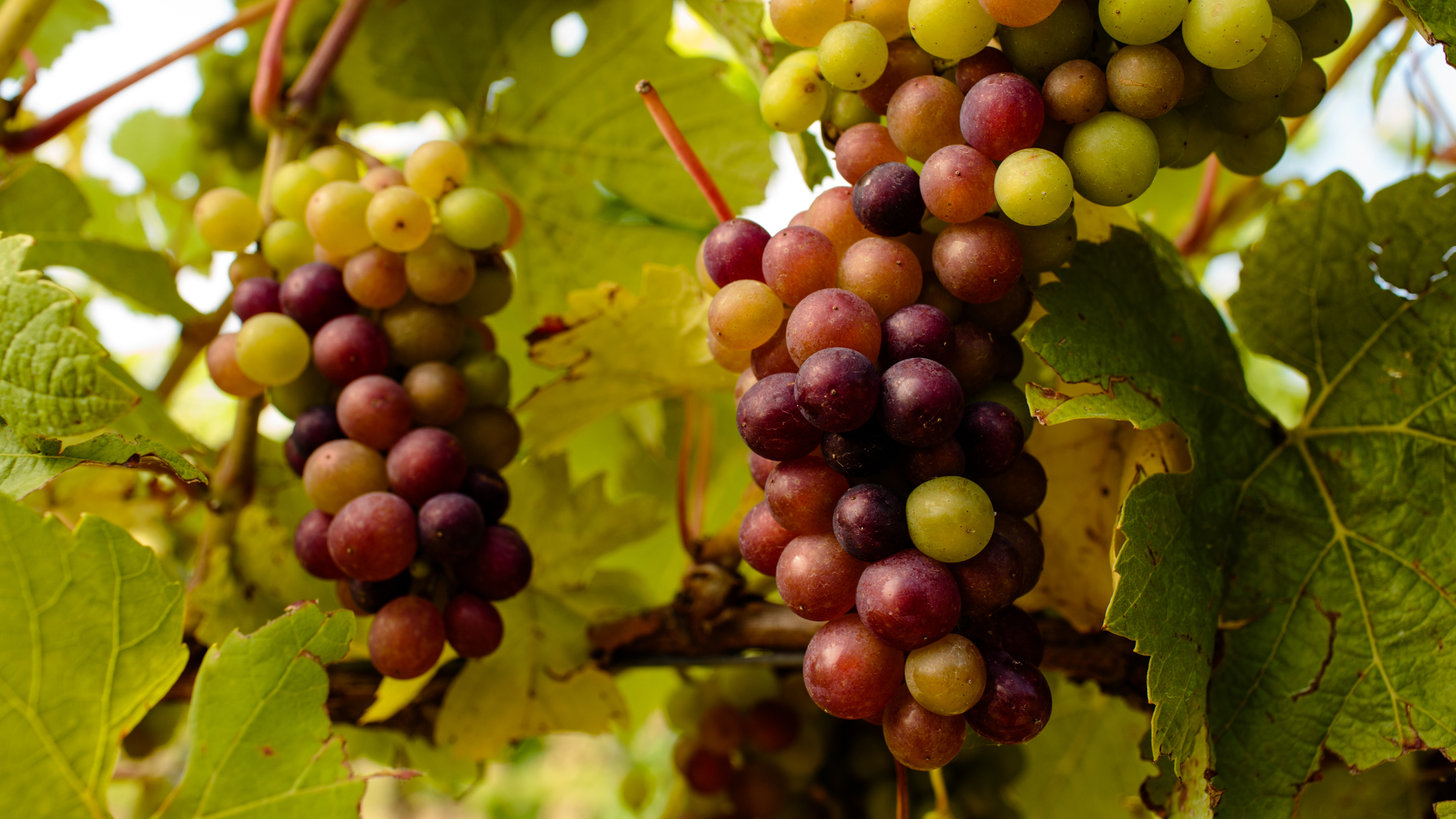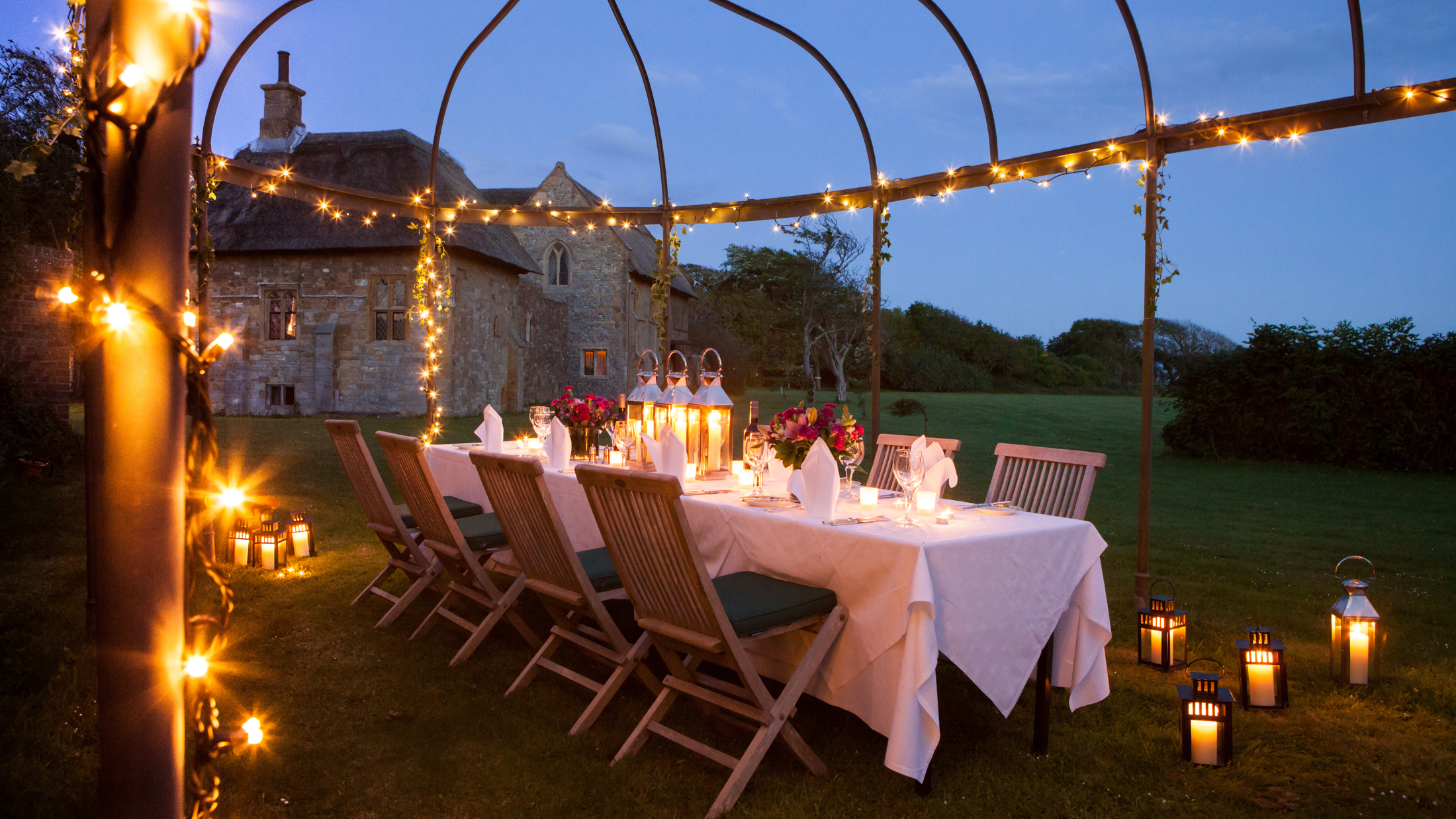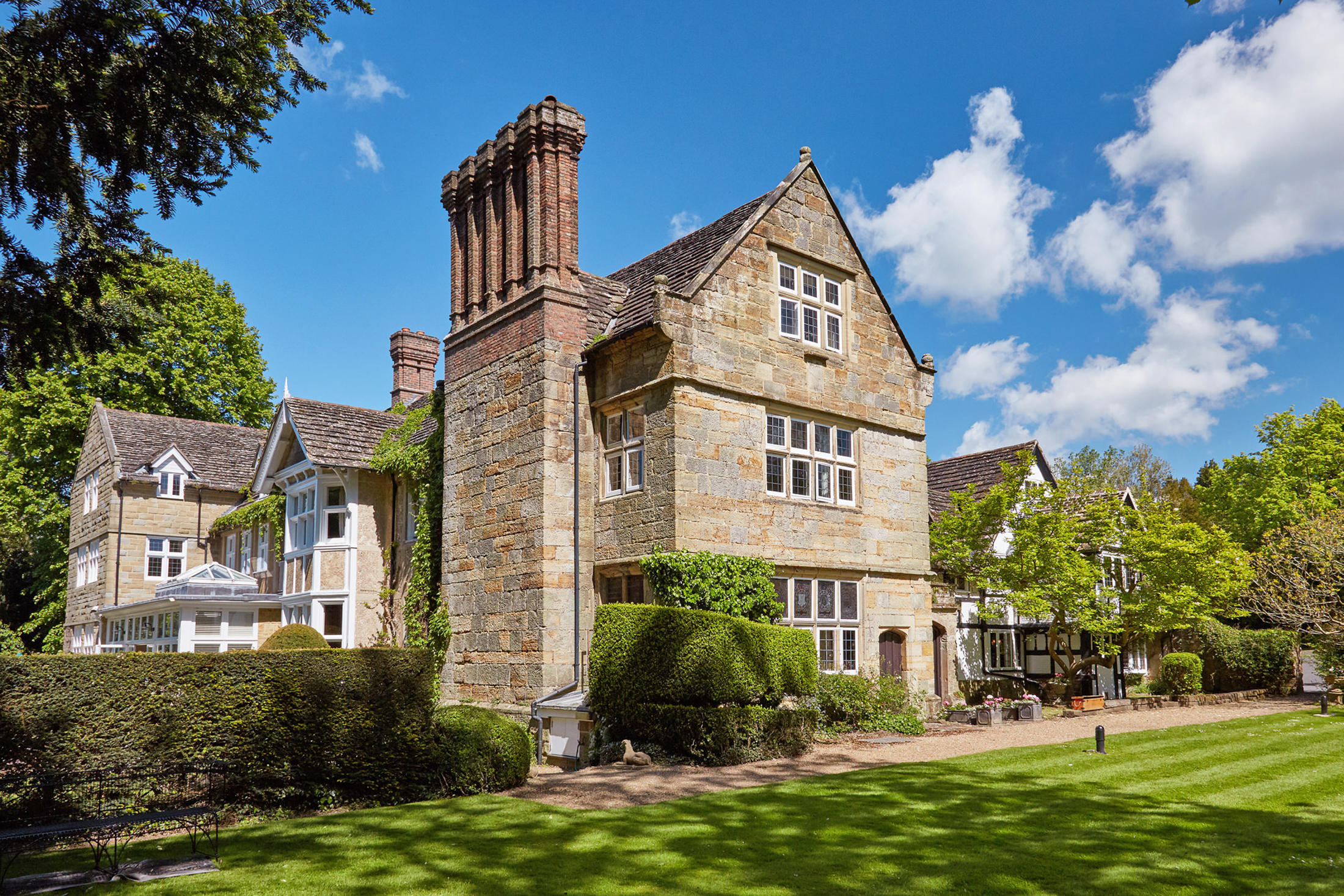A food-fuelled road trip through Southern England has always been a good idea: you can graze on everything from Whitstable oysters to South Coast bream, Ashdown Forest wild game to Kentish blue cheese. Fancy something sweet? Try that classic English dessert, crumble, made with local apples. And now, you can drink the local terroir, too.
The surprise is not that Southern England is now making, and serving, terrific sparkling wine, but that it has taken the legendarily thirsty English so long to get around to making it at all. Yes, northern climates are hard: grapes need sunshine to thrive. But the southern coast is England’s garden, a fertile expanse of undulating meadows, orchards, and tousled forest, with a relatively gentle climate. And just across the water is a place generally considered to be pretty good at sparkling wine. Not only does Champagne have similar weather, it sits on the same giant piece of Cretaceous-era chalk that dives beneath the Channel and reappears beneath the Downs in Kent and Sussex. (It’s what makes the White Cliffs of Dover white.) Maybe this proximity is one reason the English spent centuries importing rather than making the wine they drank in such quantities. It certainly helps explain why the most successful choice of grapes in English sparkling wine is pinot noir, pinot meunier, and chardonnay: the trio used to make Champagne.

Photo courtesy of Gusbourne Estates.
In fact, one Brighton restaurant, Isaac At, serves only Sussex wine, paired with ingredients delivered from farms and fisheries along the local coastline or foraged from top-secret locations. The team is unfeasibly young and enthusiastic, the restaurant Scandi-pale and spare, and the unconventional approach typical of Brighton, which has been a haven for eccentricity since King George III’s hedonistic heir built a replica Indian palace here in the early 1800s. (You can still visit Brighton Pavilion and marvel at displays reproducing the enormous quantities of food and drink the future George IV got through.)
Just an hour from Brighton, and a beautiful scenic drive through South Downs National Park, is Stopham Vineyard. Here Simon Woodhead, unusually for an English winemaker, concentrates on still white wines, including a luscious pinot gris that tastes of apricots. Woodhead offers pre-booked tours—happily, as several of the most notable English wineries are not open to visitors. For those, you’ll have to eat well in the restaurants championing these homegrown vintages. One such is at the beautiful Elizabethan hotel and spa Ockenden Manor, where the only hardship, when whetting the appetite for home-smoked mackerel or Jerusalem artichoke soup with Sussex cheddar and truffle toastie, is deciding which of the elegant, bone-dry local sparkling wines to pick. There’s Bolney Estate, made just down the road; Black Dog Hill, with its notes of pear and hazelnut; elegant, citrussy Wiston Estate; or the fabulous Sugrue The Trouble with Dreams—the latter three made by Dermot Sugrue, a loquacious Irishman who has become a Sussex star.
On leaving Ockenden, sated and well rested, 15 minutes’ drive will bring you to Ridgeview, where the Roberts family—despite having watched the Queen and President Obama raise glasses of their gorgeous Fitzrovia Rosé at a state dinner—prefer an informal approach: a picnic hamper includes ham, cheese, smoked salmon, bread, and butter—all from Sussex—chutney made just two miles away, and of course, a couple of glasses of Ridgeview’s fine fizz. You’ll eat and drink surrounded by vines—and in spring, by a carpet of bluebells.

Photo courtesy of Gusbourne Estates.
Next up: Biddenden. Just across the border in Kent, you drive between the South and North Downs, across the High Weald, an officially designated Area of Outstanding Natural Beauty: the fourth-largest AONB in England and Wales. The soil of this ancient landscape is soft clay, which erodes to form the gently rolling hills, and harder sandstone, which has layered into interesting ridges. Neither of these is chalk, but the wineries around the edges of the High Weald don’t seem to find this a problem. Their sparkling wines are lighter, less serious than top Champagnes—but decidedly drinkable nonetheless. Tourist-friendly vineyards include Biddenden Vineyards, Kent’s oldest winery, and Chapel Down—which supplied sparkling rosé for Prince William’s wedding to Kate Middleton in 2011. Chapel Down’s restaurant boasts a Michelin Bib Gourmand and a terrace overlooking the vines, where your locally sourced lamb or gurnard comes garnished with herbs and vegetables from the winery garden. Right on the Kent-Sussex border, Oxney Organic Estate has wine and simple but comfortable self-catering accommodation, ranging from two-person shepherd’s huts to a group of converted barns housing 18, enabling you to drink as much as you consider healthy and then just fall into bed. A drive incorporating all three takes an easy 30 minutes.
Alternatively, walk to Biddenden Vineyards from the West House, a family-run restaurant with low beams and an open fire plus four eclectic bedrooms in what was once a Flemish weavers cottage. You’ll need the exercise. Chef-owner Graham Garrett was a drummer in 1980s rock bands who switched to cooking; his wife and son are out front, serving homemade bread, butter, and schmalz (pork fat flavoured with thyme and whipped with butter). Then, a succession of wondrous courses—a Parmesan churro like a giant cheese straw; a taco stuffed with duck liver parfait—that wittily blend local produce with distant influences, without sacrificing taste to a good idea. The excellent wine list includes hard-to-find fizz from Hoffmann & Rathbone, just a few miles away but with no tasting room. Its stony, vibrant Classic Cuvée 2013 shows to far better advantage with that churro than alone, anyway.

Image courteys of Bailiffscourt Hotel.
For creamy, elegant fizz that really can compete with Champagne, make a short stop at the shiny new tasting room at Gusbourne Estate en route to the Fordwich Arms, a wood-panelled gastropub in England’s smallest town, where another remarkably young chef-owner, Daniel Smith, 28, won a Michelin star within a year of opening. His food is amazing: wonderful ingredients, combined with real inspiration and served with high drama. At the table, a duck consommé percolated over herbs through a giant glass double dome; prawns flamed on blocks of Himalayan salt; glass jars filled with applewood smoke (from local trees, of course) whipped away to reveal tiny, tender duck hearts; and heady white truffle grated onto creamed potato, rounded out with Madeira sauce. The superb wine list is supplemented by local options, including Simpsons, sparkling wine from nearby Canterbury. For centuries, thanks to the canny Champenois, fizz has been the drink of celebration; these English wines, fresh, vibrant, and improving every year, are themselves worth celebrating.
This article is from our Spring 2020 issue. Discover more of the world of Food and Drink.









